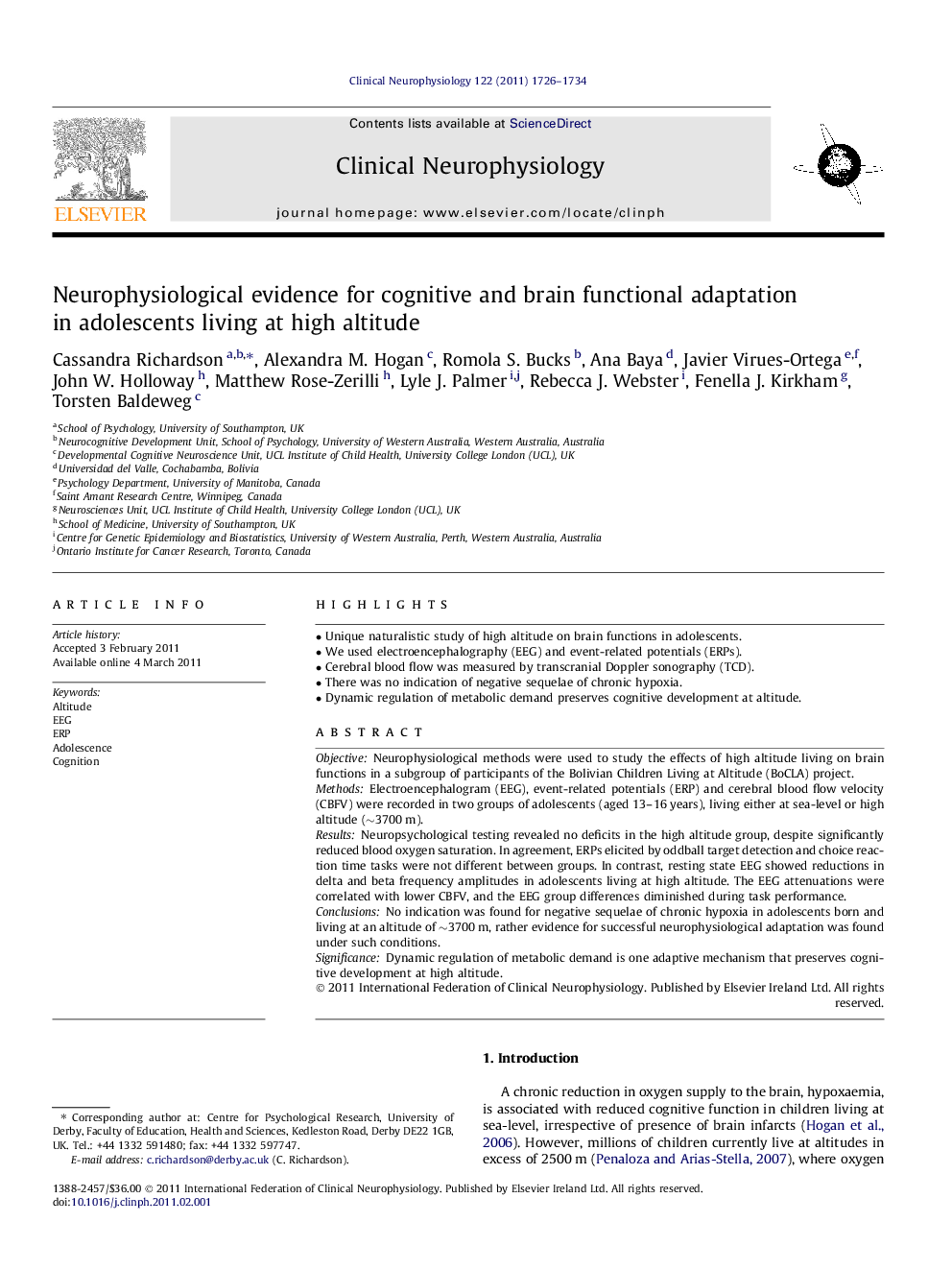| Article ID | Journal | Published Year | Pages | File Type |
|---|---|---|---|---|
| 3045779 | Clinical Neurophysiology | 2011 | 9 Pages |
ObjectiveNeurophysiological methods were used to study the effects of high altitude living on brain functions in a subgroup of participants of the Bolivian Children Living at Altitude (BoCLA) project.MethodsElectroencephalogram (EEG), event-related potentials (ERP) and cerebral blood flow velocity (CBFV) were recorded in two groups of adolescents (aged 13–16 years), living either at sea-level or high altitude (∼3700 m).ResultsNeuropsychological testing revealed no deficits in the high altitude group, despite significantly reduced blood oxygen saturation. In agreement, ERPs elicited by oddball target detection and choice reaction time tasks were not different between groups. In contrast, resting state EEG showed reductions in delta and beta frequency amplitudes in adolescents living at high altitude. The EEG attenuations were correlated with lower CBFV, and the EEG group differences diminished during task performance.ConclusionsNo indication was found for negative sequelae of chronic hypoxia in adolescents born and living at an altitude of ∼3700 m, rather evidence for successful neurophysiological adaptation was found under such conditions.SignificanceDynamic regulation of metabolic demand is one adaptive mechanism that preserves cognitive development at high altitude.
Research highlights► Unique naturalistic study of high altitude on brain functions in adolescents. ► We used electroencephalography (EEG) and event-related potentials (ERPs). ► Cerebral blood flow was measured by transcranial Doppler sonography (TCD). ► There was no indication of negative sequelae of chronic hypoxia. ► Dynamic regulation of metabolic demand preserves cognitive development at altitude.
